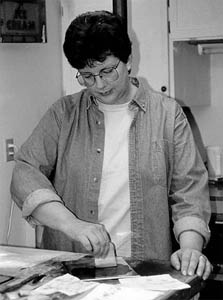
|
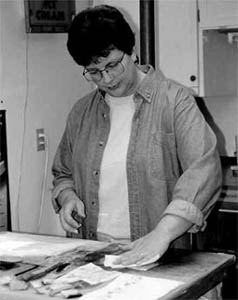
|
The art of intaglio (etching) started centuries ago, sometime around Rembrandt's time, although Durer was the original master of etching. Etchings, perfected in the seventeenth century, was rapidly taken up, since it was far more manageable than engraving, and allowed greater freedom in drawing the design. The process is basically the same as it was when it started.In etching, a copper or zinc plate, approximately 16 gauge, is covered with an acid resistant coating such as liquid asphaltum. The design is then drawn with a needle like tool called an etching tool. The metal is exposed wherever it is drawn on the plate with the etching tool. The plate is then put into a shallow tray with acid in it. The acid does the work an engraver used to do. It eats down into the metal wherever the metal is exposed. The lines are now etched into the plate. Next, comes one of the hardest steps.
This step is called aqua tinting. The plate is washed so that all the greasy residue is gone. Rosin is ground into a very fine powder. It is put into a box that is sealed very well called a rosin box. With the door of the box closed, the dust is blown around with a blower. Very quickly, the plate is placed on a shelf in the rosin box and the door is shut. After waiting a few minutes to let the dust settle, the plate is removed from the box and is now heated on a hot plate to melt the rosin dust on to the plate. The rosin dust is acid resistant, so that the acid eats around the dust particles adhered to the plate. By using this process, tones are put on the design. A liquid called stop out varnish is then used to paint where the lightest tones will be, and then it is a continuous process of stopping out and dipping into the acid until the darkest of tones are achieved.

|

|
Now, the plate can be proofed to see if it has turned out like it should. It's a very long and tedious process to finally achieve the results that you want. An edition size is determined by the artist and only that many prints can be printed off that plate. Each plate is inked one at a time and placed onto a bed of an etching press. Damp paper is placed onto the plate and both are run through the press. The tremendous pressure pushes the paper into the plate and picks up the ink. It is then placed onto a rack to dry. Each one is numbered and signed by the artist. Depending on the artist and or the design, it can then be hand colored.

|

|
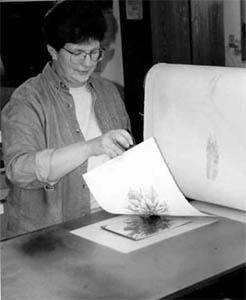
|
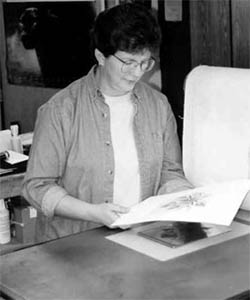
|

|
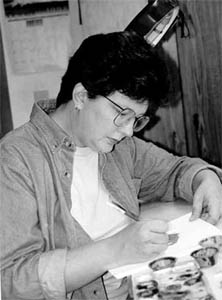
|